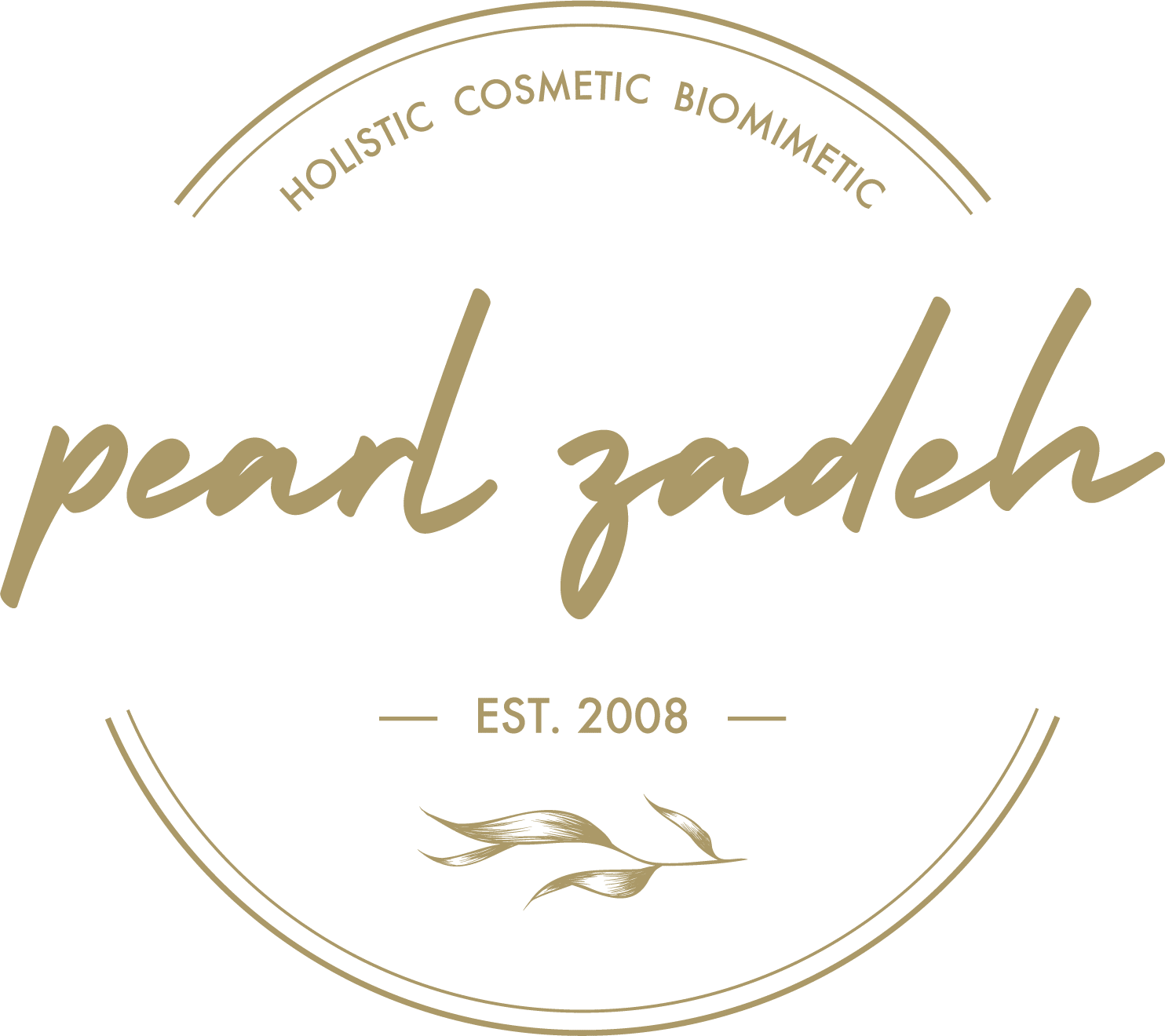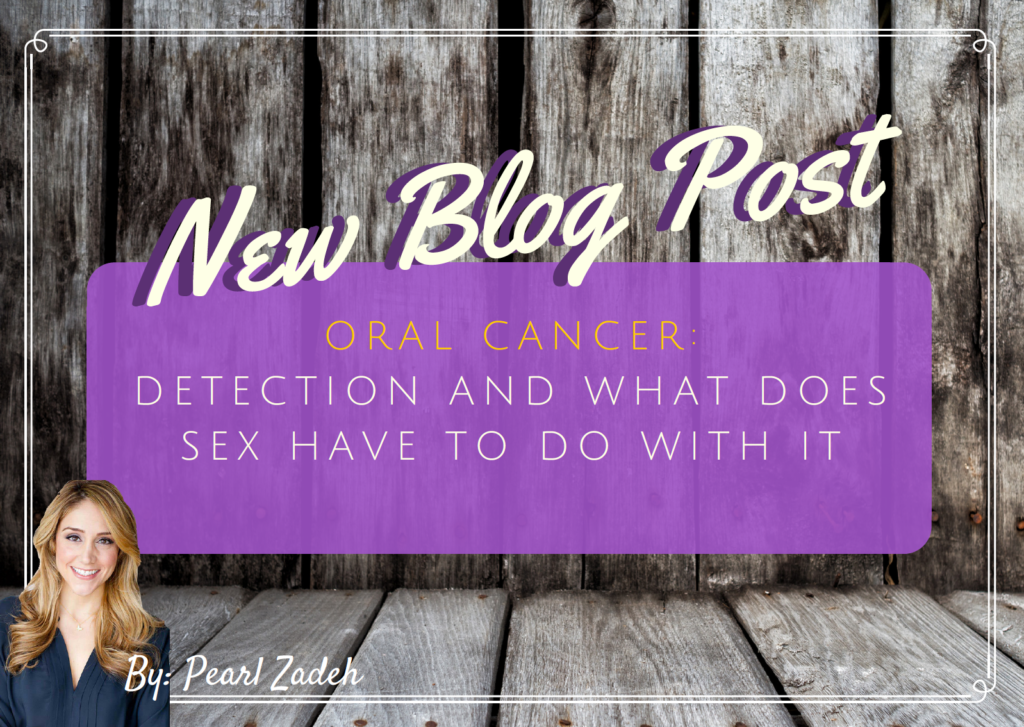Oral Cancer: Detection and what does sex have to do with it?
Has your dentist ever held your tongue with a gauze and evaluated the sides of your tongue thoroughly? Has your dentist ever felt all the glands of your head and neck at your yearly checkup, and asked you to open wide and say “Ahh”? If not, change your dentist ASAP! Dentists have an ethical obligation to perform an oral screening on all of their patients at least once per year. Dr. Pearl Zadeh’s job goes far beyond keeping your teeth pearly white, and functional, and your gums clean. In fact, routine oral cancer screenings are one of the most important reasons to visit her dental office in Woodland Hills on a regular basis.
What are the high-risk areas for oral cancer?
Oral cancer can develop on your lips, cheeks, tongue, throat, gums, salivary glands, and nearly any other soft tissue inside your mouth. They can look as conspicuous as an area on your lip that looks chapped. It then later heals and somehow appears again in the same exact spot. We have noticed patients frequently dismiss suspicious lip sores, saying “Oh, it’s just chapped.” If you have any of these reoccurring spots, please contact us or your dermatologist immediately for further evaluation. During a routine oral cancer screening, Dr. Pearl Zadeh will check all of these areas for any signs of a problem.
What does oral cancer look like?
During the oral cancer screening procedure, your dentist will look for abnormal tissue growths in your mouth, head and neck. Suspicious lesions can appear very “normal” to the average patient. It can look like a red patch, a white patch, a freckle that is black or blue, or a pigmented lesions. Some oral cancers have been detected by Dr. Pearl Zadeh not visually, but during her annual TMJ (temporal mandibular joint) examination. One may experience limited opening of the mouth. If you have no history of TMJ concerns, this can be an indicator of a potential growth that needs to be further evaluated. Patients may complain of limited space on the floor of the mouth or difficulty swallowing. The key to Pearl Zadeh’s approach is always listening to her patients. She does this not only with her ears, but with her eyes, so she can see any visual cues, changes in speech, and varying movement of the muscles of the face from one side to the other.
How is oral cancer screening done?
It’s relatively simple. Look, listen, and feel. Some patients comment that they are loving the manual massage as she feels the glands of the neck for funny lumps or bumps. When looking in the mouth, a gauze is used to hold the tongue and inspect the sides of the tongue. You will need to remove any dentures you have during the screening to ensure a thorough examination. The process is quick, painless, or even pleasurable depending who you ask!
How often do I need an oral cancer screening?
Depending on the patient’s risk factors, Dr. Zadeh or our dental hygienist can perform an oral cancer screening at least once a year. She encourages patients to be aware of their own body and mouth. If a patient notices anything abnormal, she recommends that they come in right away. In some cases, she may recommend that you have a checkup more than once a year.
How long can oral cancer go undetected?
The leading reason why oral cancers do not have a high survival rate is based upon the fact that they are not detected early enough. Unfortunately, it’s entirely possible for oral cancer to go undetected by the individual who has it for a long time. The reason for this is that oral cancer, in most cases, is not present with any obvious symptom(s). It’s all too easy for a person to overlook small lumps, patches, sores, and other inconspicuous signs of oral cancer. This is why regular visits to our Woodland Hills dental office and Dr. Pearl’s routine oral cancer screenings are such an important part of your oral health regimen. Early detection makes it much more likely that the cancerous tissue can be removed safely.
What are some risk factors for oral cancer?
Think of your ideal vacation: sun, frosty beverages with alcohol, meeting someone special and sharing a special sexual encounter. Think twice! Okay, maybe that is too dramatic, but here is the scoop on risk factors. Sun exposure is well documented to be a leading risk factor to squamous cell carcinoma and other types of cancers. We can develop these same squamous cell cancers around our mouth, which makes it imperative to use an SPF chapstick or SPF lipstick whenever you are outdoors. Alcohol and smoking are also risk factors. Studies have shown that alcohol, when combined with smoking, have a synergistic effect on your body, putting you at a higher risk for oral cancers. Human Papilloma Virus, specifically HPV16, is a sexually transmitted disease that is linked with oral cancers of the throat, tongue, and base of tongue.
If you are interested in learning more about how our dental services can help you, please call our Woodland Hills office at (818) 672-1071 for an appointment.

